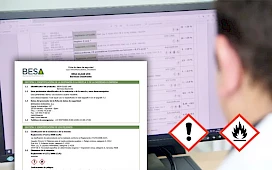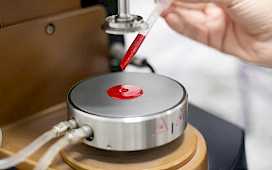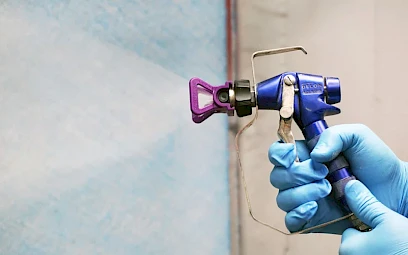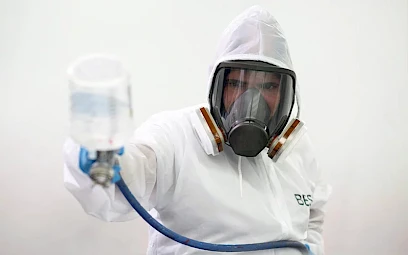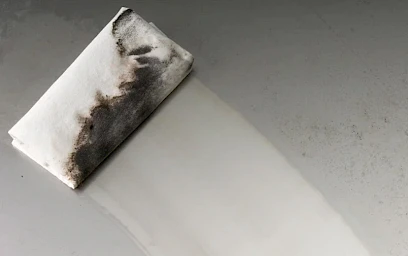How and why is static electricity created?
Electrostatic charges are generated when liquids such as paints and solvents are transferred as follows:
- When the liquid flows through a pipeline or through filters.
- When the projected liquid exits through the nozzle of a painting equipment.
- When liquid falls into containers for filling.
- When the liquid is stirred in the container either when being conveyed, shaken or mixed.
The amount of electrostatic charge generated will be determined mainly by the following factors:
- The shape and filling system of the containers.
- The resistivity of the paint: For example, in low resistivity products, electrostatic charge accumulation will be much lower as they are good energy conductors.
- And the transfer rate: the higher the product flow rate, the higher the charge generation. More charges will also be generated if the liquid is sprayed or sprinkled, rather than jetted.
Static electricity on the surfaces of liquids
If an electrically charged liquid is transferred into a container, the charges will accumulate inside the container, but as they repel each other, these charges will be mostly located towards the outer surface.
In these cases, two situations must be considered depending on whether the metal container is in contact with ground or not.
Firstly, if the container is grounded, it will be electrically neutral externally, but inside the container there will be charge differences between the paint and the container walls themselves, which will remain until enough time has elapsed for these charges to dissipate completely.
If the container is not grounded, the charge on the liquid surface attracts an equal charge of opposite sign into the container. It is then feasible that an electrostatic spark discharge may occur, for example through any metallic element electrically connected to ground, thus generating a high-risk situation.
Static electricity in people
People can also accumulate charges both through their movement and contact with the external environment and through the influence of the electric fields they are exposed to, such as objects or other people. The accumulation of charges in people depends to a large extent on their physical characteristics, especially the condition of their skin (whether dry or wet) and their level of perspiration.
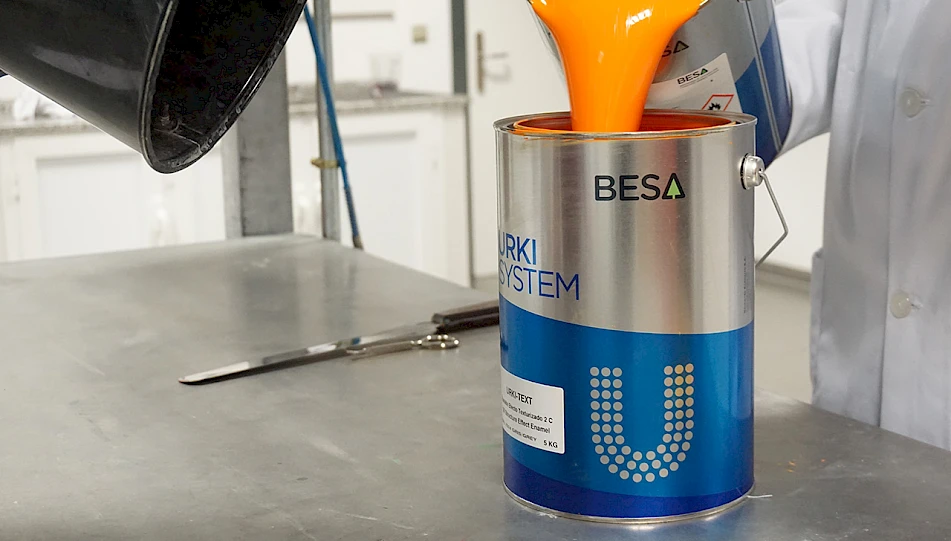
On the other hand, although the human body is a good conductor of electricity, certain clothing can act as a negative factor that promote the accumulation of charges, due to the low conductivity of certain garments. Thus, for example, clothing made of synthetic fibres and the use of gloves or insulating footwear is counter-productive if there is a risk of fire or explosion in flammable atmospheres.
A person’s isolation to ground by using non-conductive material, such as rubber or plastic, and being on non-conductive pavement will be the conditions required for the person to accumulate considerable electrostatic charge.
Preventive measures to be taken against the risk of static electricity
We distinguish between preventive measures, which are those preventing the existence of flammable atmospheres and the low generation of charges, and protective measures, whose main goals are to reduce the accumulation of charges that are already generated.
Main prevention measures
- Control of flammable atmospheres: avoid the generation of atmospheres with a high flammable vapour content. To this effect, it is advisable to conduct the shaking and mixing processes under appropriate suction and/or ventilation. Furthermore, it is advisable to keep the containers closed to prevent the emission of paint solvents.
- Controlling the flow rate of liquids and the container filling system: It is advisable to avoid high flow speed in pipelines or liquid transfers.
- Equipotential interconnections and grounding: To ensure that the charges formed can be easily removed without causing any danger, make sure that all conductive surfaces are interconnected, and that these in turn are grounded.
- Suitable work clothes: professionals working in facilities where flammable liquids are transferred should not wear clothes made of synthetic fibres. Clothing should preferably be made of cotton, including underwear. It is also advisable to limit the use of wool garments to the extent possible. Footwear and gloves must be conductive. All this will provide sufficient protection provided that the floor is also conductive, which is another aspect to consider.
- Environmental humidity control and safe working procedures: To conclude, we will state that, if possible and in a complementary manner, maintaining a relative humidity above 60% is a highly recommended measure in environments that may be flammable. If there is high humidity, this will promote the elimination of static charges through the environment as they are generated.
As we have seen, all the prevention and protection measures described in this video will be effective if their application and control can be ensured by training the staff exposed to the risk, and if they use safe work procedures.
For further information, please refer to the source NTP 567 Prevention Technique, published by the Instituto de seguridad e higiene en el trabajo (Institute for Safety and Hygiene at Work).











